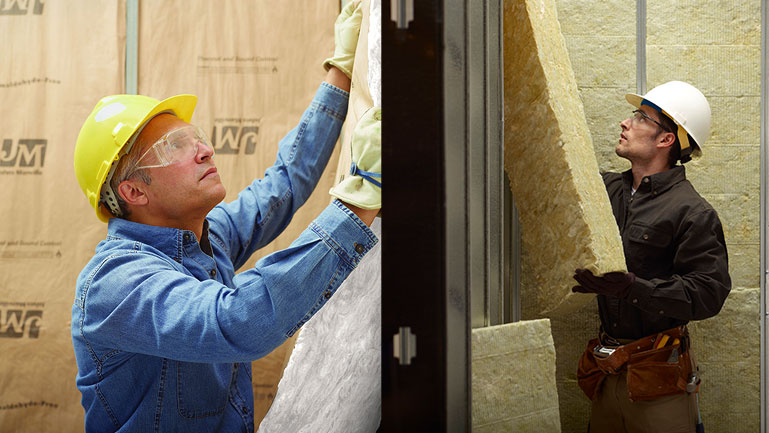In the realm of building insulation, the debate often narrows down to two key players: Polyisocyanurate (PIR) and Mineral Wool. This article delves deep into their composition, sustainability, carbon footprint, and application scenarios, shedding light on why Mineral Wool often emerges as a superior choice, while also acknowledging instances where PIR could be more suitable.
Composition and Manufacturing
Mineral Wool
- Origins: Mineral Wool is produced from natural materials – basalt or dolomite. Glass Wool, a type of Mineral Wool, is made from recycled glass.
- Production Process: The raw materials are melted at high temperatures to form a lava-like substance, spun into fine fibers, and bonded together with resins. The process is energy-intensive but has evolved to incorporate more eco-friendly practices.
PIR
- Ingredients: PIR is a type of rigid foam insulation derived from the polymerization of isocyanates and polyols, containing various chemical additives for enhanced properties.
- Manufacturing: The chemical reaction produces gases that expand the material, forming a light, strong insulating layer. This process requires careful handling of chemical components, often leading to concerns about its environmental impact.
Sustainability and Environmental Impact
Mineral Wool
- Recycled Content: The use of natural and recycled materials in Mineral Wool makes it a more sustainable option. It helps in reducing waste in landfills.
- Life-Cycle Assessment: Over its lifespan, Mineral Wool demonstrates less environmental impact. It’s long-lasting, reducing the need for replacement and additional resource consumption.
PIR
- Eco-Friendly Innovations: Recent advancements in PIR production include more sustainable blowing agents to reduce its carbon footprint.
- Durability and Efficiency: PIR’s superior insulation properties mean less material is needed to achieve desired thermal performance, which can contribute to overall resource efficiency.
Carbon Footprint
Mineral Wool
- Production Emissions: The high-temperature manufacturing process of Mineral Wool does contribute to CO2 emissions. However, advancements in technology are steadily reducing these emissions.
- End-of-Life: Mineral Wool is recyclable, which contributes to a lower overall carbon footprint across its lifecycle.
PIR
- Chemical Processes: The chemical production of PIR is associated with higher CO2 emissions. However, the insulation efficiency of PIR can offset this over time by reducing energy consumption in buildings.
Application Scenarios
Mineral Wool
- Versatility: Mineral Wool is adaptable to various applications, including residential, commercial, and industrial insulation. It’s particularly favored in scenarios requiring fire resistance and acoustic insulation.
- Environmental and Health Safety: Its non-toxic nature and fire resistance make it a safe choice in most building scenarios.
PIR
- Space Efficiency: In situations where space is at a premium, such as in flat roofing or wall systems, PIR’s higher insulation value per inch can be advantageous.
- Moisture Resistance: PIR is less permeable to moisture, making it suitable for damp climates or applications where moisture management is crucial.
While both PIR and Mineral Wool have their unique strengths, Mineral Wool stands out for its sustainability, safety, and environmental friendliness. PIR, with its superior thermal efficiency in thinner layers, is preferable in specific applications where space and moisture resistance are key concerns. This comprehensive analysis underscores the importance of considering both environmental impact and functional requirements in choosing the right insulation material.

